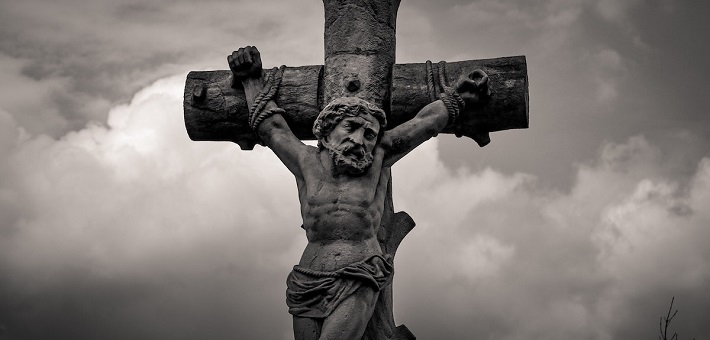Commentary on Mark 10:35-45
Mark continues here with a series of teachings that seek to lay out how the prospective community should organize its structure, particularly around governance issues. At a fundamental level, the questions are: What criteria should the Christian community implement to rule itself? Who should be the leader or make decisions in the assembly?
The narrative follows a simple pattern: the sons of the Zebedee pose a question to the teacher (10:35), inaugurating a dialogue where Jesus gives a response intended to offer the criteria for such governance. The dialogue progresses from a simple question about a literal sitting at the table to broader criteria about community ruling. Without claiming literary dependence, Mark uses here a Johannine technique whereby the punchline relies on a misunderstanding between a literal dimension (sit at the table) and a theological one (sit next to Christ).
I have argued elsewhere that Mark is a gospel informed by pain, torture, and trauma. Jesus dies the death of the enslaved in a torturous process that ends up annihilating, as is the case during the process of lengthy torture, his subjectivity, his world, and his language. Let us think about the following question: how does literature convey the incommunicable nature of pain intimately associated with torture?
Biblical scholars and liberation theologians have emphasized the political dimensions of such torture. Recent scholarship has emphasized the race, gender, sexual, and class components of Jesus’ torture: as a male Jew, Mark depicts Jesus’ torture as a continuous process with hints of sexual abuse. Jesus goes through the death of a slave. Liberation theologians have expanded the category of the “crucified” to talk about “el pueblo crucificado.” Such a theological move emphasizes two critical points: a) it makes explicit that Jesus’ death was not a willful act, but rather the culmination of a political process intent on eliminating his subversive movement and b) Jesus’ message inaugurated a move that, at least initially, sat at odds with Greco-Roman ideals of authority.
James and John, the sons of Zebedee, request of Jesus to be seated next to him “in glory” (10:37). Jesus’ response brings to the fore the main topic that weaves together the whole gospel of Mark. Scholars have long considered Mark “the gospel of the cross” because other main topics such as the temple, discipleship, and Christology resort back to the reality of the cross as the grounding criteria of interpretation. Although Mark features the apostles as the main models of discipleship, the gospel also presents them as flawed characters. Think, for example, of Peter, who continuously misunderstands Jesus’ messianism (Mark 8:27-9:1). Peters’ rebuke triggers Jesus to lay out the theological dimensions of the discipleship model, which essentially consists of following Jesus to the cross. Such teachings, however, fail. At the peak of the Gospel, Mark is explicit about Peter failing to follow his teacher to the cross (Mark 14:72). In the end, Jesus stands by himself, abandoned by the most prominent apostle and the rest of the disciples.
In this passage, we encounter a theologized version of the “cross” as the criteria for following Jesus. To the disciples’ request, Jesus responds: “are you able to take my cup? Or to undergo the baptism which I am to undergo?” (Mark 10:38). The disciples’ response is bold, and Jesus does not disavow it. Instead, Jesus resorts to a principle of undecidability about who may occupy the authority’s chair: “it is not for me to give but to those for whom it has been made ready” (10:40). This is an enigmatic saying that has been traditionally interpreted as Jesus conferring authority to God. I would like to suggest a supplementary reading.
If it is true that Mark is a gospel inflected by torture, pain, and trauma, and if it is the case that Jesus’ call for discipleship includes a call to experience such realities (“you will drink from the cup from which I take and the baptism which I am about to undergo you will undergo,” Mark 10:39), it follows that there is no known answer on the other side of such experience. From the testimonies of those who have gone through torture, we know that their past, present, and future worlds collapse under the heavy yoke of extreme pain and cruelty.
The undecidability of who will have a front seat on the other side of such experiences comes from the fact that it ultimately depends on the Father and from the fact that pain is a liminal experience in itself. Victims of torture express that they cannot think of a future beyond the fact that pain destroys their bodies and language. Accordingly, we can interpret Jesus’ words as a raw acknowledgment of such reality: we only know that true discipleship involves following in the steps of Jesus’ crucifixion, but very much like Mark’s original ending insinuates silence (Mark 16:8), so the reality of following in the steps of the cross ends with any expectation of what the future world holds.


October 17, 2021